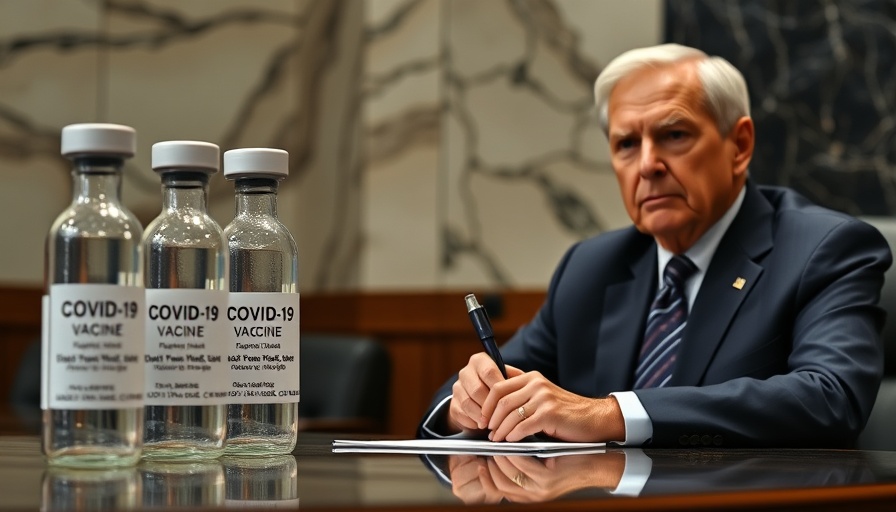
Understanding the Connection Between Iron Levels and Brain Function
Feeling lost in a fog? If you're a woman in perimenopause, you’re not alone. Many women experience periods of confusion and memory lapses during this transition, often attributing these issues to hormonal fluctuations. However, recent research from the University of Oklahoma reveals that low iron levels may be just as culpable, providing a simpler, natural solution to combating what many see as an inevitable part of aging.
Iron’s Role in Cognitive Clarity
The role of iron in maintaining cognitive health is profound. Scientists have found that iron is vital for four critical brain functions: it aids in myelin production, supports neurotransmitter synthesis (especially for balancing dopamine and serotonin), helps transport oxygen to neurons, and plays a significant role in synapse formation—facilitating communication between brain cells. Yet, ironically, this crucial mineral is often overlooked during routine assessments.
The Groundbreaking Study
The study in Nutrients examined 39 perimenopausal women with varying iron levels, using cognitive assessments alongside blood tests and MRIs. Remarkably, even those with normal blood test results exhibited cognitive issues if their iron levels were not optimized. Dr. Michael Wenger, the lead researcher, noted the real-world implication of iron deficiency: a woman could experience an additional 150 milliseconds delay in decision-making—compounding the problem during complex tasks.
Debunking Common Misconceptions: Iron and Alzheimer's
One of the lingering fears surrounding iron supplementation revolves around its potential link to neurodegenerative diseases, particularly Alzheimer’s. The study found that while boosting blood iron is beneficial, it does not raise brain iron levels—a significant relief for those concerned about risks involved in iron therapy. This finding allows women to optimize their iron without the fear of adverse neurological impacts.
Finding Iron Naturally
So, how can women enhance their iron levels safely? Simple dietary adjustments can make all the difference. While traditional medicine may be quick to recommend hormonal therapies or antidepressants, a focus on enriching the diet with iron-rich foods stands out as the most natural solution. Natural sources like oysters, spinach, and vitamin C-rich fruits can help improve iron absorption and address deficiencies effectively.
The Broader Impact of Nutritional Deficiencies
This new research challenges the conventional approaches often taken when women begin to experience cognitive changes. Emphasizing iron optimization over pharmaceuticals not only promotes better mental clarity but aligns with a larger cultural discussion on dietary realignment and holistic wellness. In a world increasingly driven toward medication, it raises an essential question: could the answer to many health woes lie in our kitchens rather than our medicine cabinets?
Empowering Women Through Knowledge
Being aware of how low iron contributes to brain fog can empower women to pursue the necessary dietary changes. Women may feel liberated to tackle these cognitive hurdles head-on, navigating perimenopause with the knowledge that they can rectify iron deficiencies naturally.
Real-Life Implications: Stories of Improvement
Many women have shared personal accounts of overcoming brain fog through dietary changes. From community forums to support groups, stories of improved cognitive function are becoming increasingly common. These stories echo the sentiments of reclaiming autonomy over one's body and how simple ingredients can lead to significant lifestyle changes.
Take Action for Your Health
As women embark on their journeys through perimenopause, understanding the body’s nutritional needs is more crucial than ever. It’s time to advocate for oneself by prioritizing iron-rich foods in the diet, enabling clearer thinking and mental sharpness. Seek guidance from health practitioners who support dietary evaluations, ensuring you step into this new chapter with confidence and clarity.
In conclusion, the findings of the University of Oklahoma study highlight a promising path for women facing cognitive challenges during perimenopause. By focusing on nutrition, particularly optimizing iron levels, there's a natural avenue to restore mental clarity and enhance quality of life.
 Add Row
Add Row  Add
Add 



Write A Comment